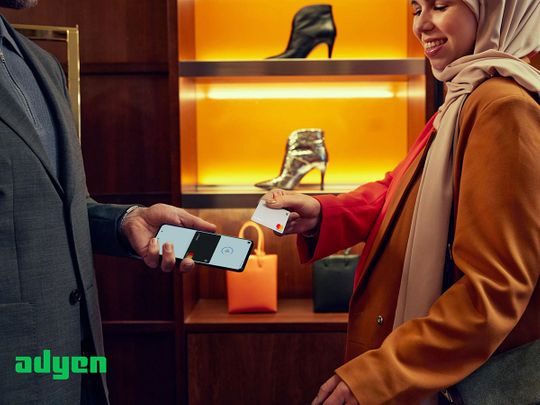
The bells of recession are ringing, and global concerns are rising. While many regions are bracing for a potential recession, the UAE appears to be in a good position due to high oil prices and the steady growth of non-oil sectors.
So, what fintech trends will we see? SMEs should be aware that there is a massive value behind building frictionless as-invisible-as-possible payment experiences, which are data-driven, digitally savvy, and well aware of shoppers’ behavior have a higher chance of winning the race.
Embedded finance
The year will be another big one for embedded finance. Hundreds of thousands of SMEs have converted customers by introducing embedded financial services.
Long underserved by traditional banking, SMEs have been partnering with embedded payments platforms for years. In this region, it’s picking up, as businesses are building trust in these ecosystems and the advantages it will bring in future.
Taking brands in UAE as a prime example, embedded financial products can completely shift the way SMEs position themselves. This is helping relationships with consumers as well. Specifically, 83 per cent of surveyed UAE consumers have confirmed their interest in brands that offer ‘buy now pay later’ services, according to our 2022 Retail Report.
On a global level, a survey conducted by Adyen and Boston Consulting Group, reveals that SMEs are increasingly open to sourcing financial services from non-traditional bank entities. Sixty-six per cent of those polled said they would benefit from a bank account offered by their embedded finance platform.
While embedded financial products for SMEs are still in the early stages of adoption.
In-person experience
As with any innovation, once the bar has been set, everyone else scrambles to follow. In-person retail and restaurant experiences are no different. Yes, there is no denying that online shopping became a crucial part in the consumers’ behavior. Still, in-store made a strong comeback after the pandemic.
Shoppers are craving the personal touch again, and are counting on the journey to be as smooth as its online counterpart. We found that 64 per cent of UAE consumers say physical stores are an important touchpoint, even if they shop with the same retailer online.
The in-person payment landscape has evolved in an irreversible manner, influenced by the latest innovative in-store solutions (e.g self checkout, buy online return in-store and more) and general customer needs.
Where does this leave the in-store payment process as it has to be as speedy as possible? Smaller, more portable devices are the answer here and we’ll only be seeing more in the coming years. Leading the way, are the minds behind iOS and Android, who continually push the boundaries of in-person payments tech.
When there’s no need for roaming devices (or indeed people to hold them) we’ll be seeing self-checkouts more and more outside of grocery and QSR. Brands like Zara and Carrefour City+ are adopting the approach successfully. Customers in a rush will welcome the appearance of more self-checkouts, with floor staff then freed to ensure their shopping experience is optimal.
Rise of digital wallets
A few years ago, we predicted payment methods would become super apps as the public continues to take more control over their money movement. Driven by the need to build a convenient, flexible and secured payment method, we witnessed banks launching their own digital wallets (e.g, Emirates NBD, Liv).
One recent famous example is Emirates Digital Wallet, an initiative by the UAE Bank federation, supported by 16 national banks, to encourage open banking.
And now digital wallets are not strictly for adults, children in the UAE can also access their own accounts created by their parents. This provides an easier way to transfer money and track children’s spending, with features that provide parents the authority to limit spending and set a strict allowance.
This is a new bar set, and it will surely change the way upcoming generations handle payments, expecting it to continue being frictionless and cashless.
This new generation of technology makes it easier to stay ahead of the curve. For that reason, we are confident that payment methods will continue to grow, to match consumers’ relentless expectations, and this region is ready to foster new technologies.













